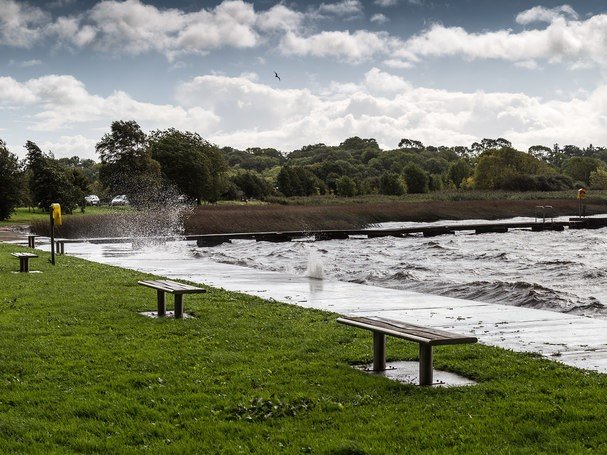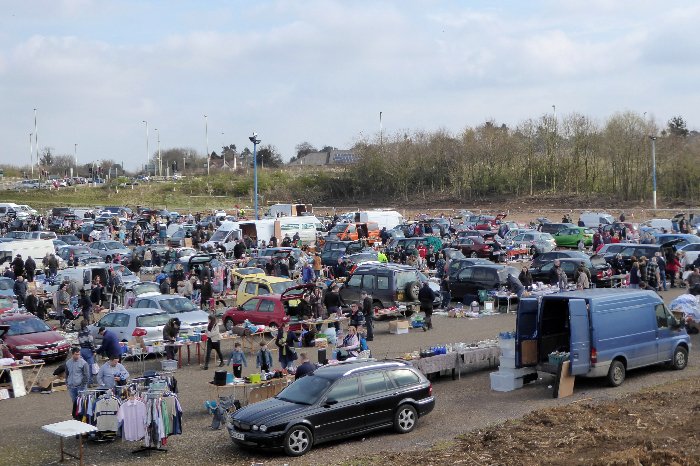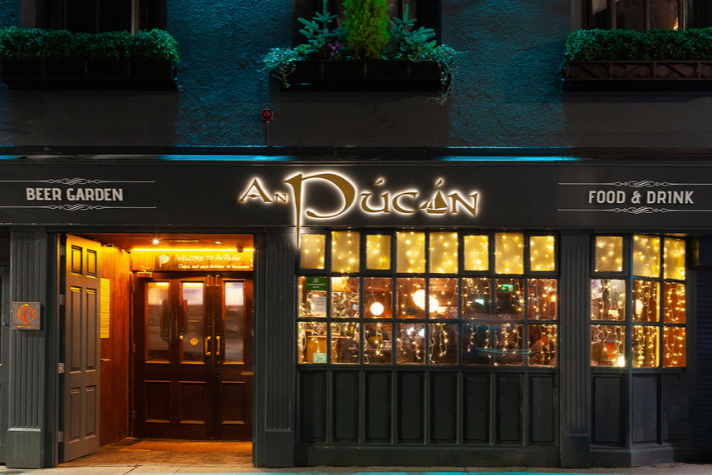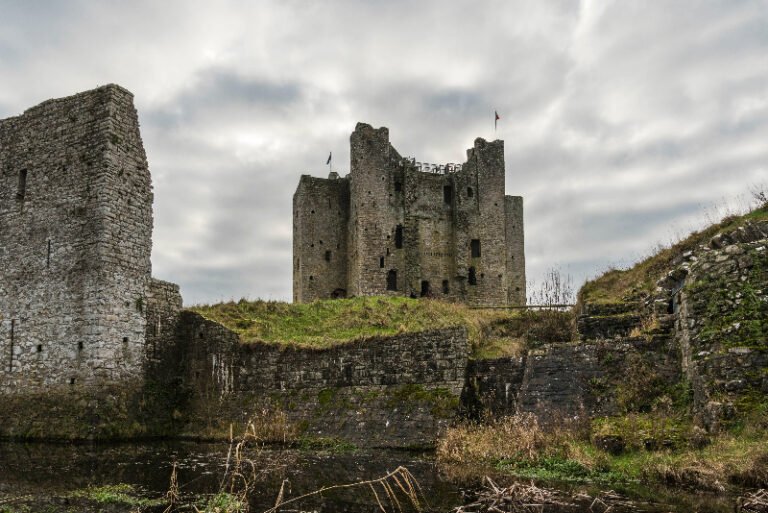
Visiting Ireland is a delightful experience, but the ever-changing weather can be a bit of a puzzle when it comes to packing. I have been living here since 2018 and based on my experience I can tell you, here the rain showers will keep you on your toes. Dressing appropriately is key to enjoying your time here. So, we will dive into what to wear in Ireland for every season in this post. Now let’s get started,
Spring
Springtime is the most beautiful time here in Ireland. As spring arrives, Ireland’s landscapes transform into a lush, green paradise. You will enjoy blossoming flowers, lush greenery, and mild temperatures. Temperatures typically range from 8°C to 15°C (46°F to 59°F). You can go to various places all over Ireland like castles, ancient ruins and many historic places to enjoy your time in here.
It is also a season of festivals and events in Ireland. It offers visitors a chance to experience the country’s rich cultural heritage. One of the most notable events is the St. Patrick’s Festival and it held in March. The festival features parades, music, dance, and a host of activities that bring the streets to life with vibrant colors and joyous celebrations.
But, don’t let the picturesque scenes trick you my friend—rain is still a frequent visitor. So layering is your best friend.
What to Wear
Light Layers: Breathable fabrics like cotton or linen should be your base layer. A long-sleeved shirt or a light sweater paired with a waterproof jacket will keep you comfortable.
Waterproof Outerwear: A reliable waterproof jacket is essential. Choose one that is both breathable and lightweight, so you can easily carry it when the sun decides to make an appearance.
Comfortable Shoes: Whether you’re strolling through parks or exploring ancient ruins, comfortable and waterproof shoes are a must. Sneakers or sturdy walking boots are ideal.
Accessories: Don’t forget to pack a scarf and a hat to keep you warm during chilly evenings or windy days.
Summer
Summer in Ireland brings longer days and relatively milder temperatures compared to other seasons. Summer in Ireland brings mild temperatures typically ranging from 15°C to 20°C (59°F to 68°F). The days are long, with up to 17 hours of daylight in June. It gives you plenty of time to explore and enjoy outdoor activities.
Hiking is particularly popular in this season among other outdoor activities. There are so many wonderful trails like the Causeway Coast Way, the Wicklow Mountains and the top of Croagh Patrick in County Mayo, a pilgrimage site with panoramic views of Clew Bay.
Cycling is another thing. There you will find one of the most popular trails the Waterford Greenway, a 46-kilometer trail that winds through picturesque countryside and along the coast. Water sports are also a big draw in summer, with opportunities for surfing, kayaking, and paddleboarding along Ireland’s beautiful beaches and waterways.
One of the festive highlights on this season is the Galway International Arts Festival, held in July.
While rain is still a possibility, you’re more likely to encounter sunny spells during this time.
What to Wear
Lightweight Clothing: Pack a mix of short-sleeved shirts, breathable tops, and shorts or lightweight trousers. Jeans can be too heavy, so opt for lighter fabrics.
Waterproof Gear: Even in summer, it’s wise to carry a waterproof jacket or a compact umbrella. The weather can change quickly, and you don’t want to be caught off guard.
Sun Protection: Don’t forget your sunglasses, sunscreen, and a wide-brimmed hat to shield yourself from the sun’s rays.
Layers: Evenings can still be cool, especially if you’re near the coast. Bring along a light sweater or a cardigan for added warmth.
Autumn
Autumn paints Ireland’s landscapes with stunning hues of gold, red, and orange, making it a magical time to visit. The country’s woodlands, parks, and countryside are transformed into a tapestry of warm hues. One of the best places to witness this seasonal change is Killarney National Park in County Kerry (I have covered it in one of my posts). The park’s extensive forests and serene lakes provide a stunning backdrop for autumn walks, with trails that meander through colorful trees and along tranquil waterways.
It is a time of harvest, and Ireland celebrates this with various festivals and events like The Galway International Oyster and Seafood Festival and the Dingle Food Festival in County Kerry.
The weather in Ireland during autumn is typically mild, with temperatures ranging from 10°C to 15°C (50°F to 59°F). While the days are shorter and there can be a mix of sunshine and rain.
However, the weather can be unpredictable, ranging from crisp sunny days to blustery winds and rain showers.
What to Wear
Layered Clothing: Dress in layers that you can easily add or remove as needed. A mix of long-sleeved shirts, sweaters, and a waterproof jacket will prepare you for any weather.
Waterproof Footwear: Invest in waterproof boots or shoes with good traction to navigate through wet leaves and muddy paths.
Warm Accessories: Scarves, gloves, and a beanie will keep you cozy during chilly days. Opt for wool or fleece materials for added warmth.
Dark Colors: Embrace autumnal shades like burgundy, mustard, and olive green in your wardrobe. Not only do they complement the season, but they also hide dirt and stains better.
Winter
During winter, Ireland’s landscapes take on a serene and mystical quality. The countryside and mountains can occasionally be dusted with a layer of frost or snow.
Visiting indoor attractions such as museums, galleries, and historic houses can be your destination too. Dublin’s many museums, including the National Museum of Ireland and the Guinness Storehouse are the most famous.
In Christmas towns and cities are adorned with twinkling lights, festive decorations, and Christmas markets. Dublin’s Grafton Street, for instance, is famous for its dazzling Christmas lights and bustling holiday atmosphere. The Winterval Festival in Waterford is another must-see.
New Year’s Eve is also celebrated with enthusiasm across the country with variety of events, including concerts, light shows, and street performances, culminating in a spectacular fireworks display.
Ireland’s winters are relatively mild compared to other parts of Europe, with temperatures typically ranging from 2°C to 8°C (36°F to 46°F). While it can be rainy and windy, the weather is generally more temperate. Winter can be cold and damp, with shorter days and occasional frost. While snow is rare, you can expect plenty of rain and damp conditions.
What to Wear
Insulating Layers: Dress warmly with thermal underwear, wool sweaters, and fleece-lined jackets. A waterproof and windproof outer layer is essential to stay dry.
Waterproof Boots: Choose sturdy boots with good grip to navigate through slippery streets and muddy trails. Look for styles that are insulated to keep your feet warm.
Accessories: Don’t forget a scarf, gloves, and a beanie to keep heat from escaping through your head and extremities.
Umbrella: While a waterproof jacket is a must, carrying a durable umbrella can provide extra protection during heavy downpours.
Reality is no matter the season, Ireland’s weather can be unpredictable. But with the right clothing you can enjoy its beauty to the fullest. Remember to pack versatile pieces that can be layered and don’t forget to check the weather forecast before heading out though it is unpredictable as usual.






